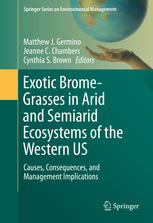

Most ebook files are in PDF format, so you can easily read them using various software such as Foxit Reader or directly on the Google Chrome browser.
Some ebook files are released by publishers in other formats such as .awz, .mobi, .epub, .fb2, etc. You may need to install specific software to read these formats on mobile/PC, such as Calibre.
Please read the tutorial at this link: https://ebookbell.com/faq
We offer FREE conversion to the popular formats you request; however, this may take some time. Therefore, right after payment, please email us, and we will try to provide the service as quickly as possible.
For some exceptional file formats or broken links (if any), please refrain from opening any disputes. Instead, email us first, and we will try to assist within a maximum of 6 hours.
EbookBell Team

4.0
36 reviewsInvasions by exotic grasses, particularly annuals, rank among the most extensive and intensive ways that humans are contributing to the transformation of the earth’s surface. The problem is particularly notable with a suite of exotic grasses in the Bromus genus in the arid and semiarid regions that dominate the western United States, which extend from the dry basins near the Sierra and Cascade Ranges across the Intermountain Region and Rockies to about 105° longitude. This genus includes approximately 150 species that have a wide range of invasive and non-invasive tendencies in their home ranges and in North America. Bromus species that became invasive upon introduction to North America in the late 1800’s, such as Bromus tectorum and B. rubens, have since became the dominant cover on millions of hectares. Here, millenia of ecosystem development led to landscapes that would otherwise be dominated by perennial shrubs, herbs, and biotic soil crusts that were able to persist in spite of variable and scarce precipitation. This native ecosystem resilience is increasingly coveted by land owners and managers as more hectares lose their resistance to Bromus grasses and similar exotics and as climate, land use, and disturbance-regime changes are also superimposed. Managers are increasingly challenged to glean basic services from these ecosystems as they become invaded. Exotic annual grasses reduce wildlife and livestock carrying capacity and increase the frequency and extent of wildfi res and associated soil erosion. This book uses a unique ecoregional and multidisciplinary approach to evaluate the invasiveness, impacts, and management of the large Bromus genus. Students, researchers, and practitioners interested in Bromus specifically and invasive exotics in general will benefit from the depth of knowledge summarized in the book.